Does revolution bring returns?
Smart ticketing and contactless payments have revolutionised fare collection in the last decade. While there’s little doubt over the ways in which the new wave of frictionless ticketing and payments has elevated passenger experience, transport operators and agencies are searching for evidence of return on investment.
They want to know how buying into account-based ticketing and open payments will create cost efficiencies and boost revenue. Historically, it’s been hard to quantify the commercial impact of reliable, easy-to-use ticketing infrastructure. However, as systems become increasingly digitised, the industry has more data available. It paints a clear picture of passenger approval of ‘tap to travel’, and of cost-savings resulting from the shift towards account-based and card-based ticketing.
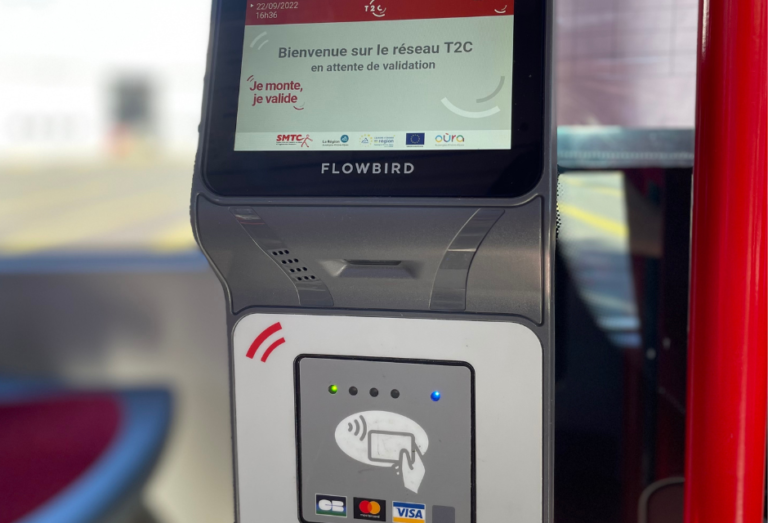
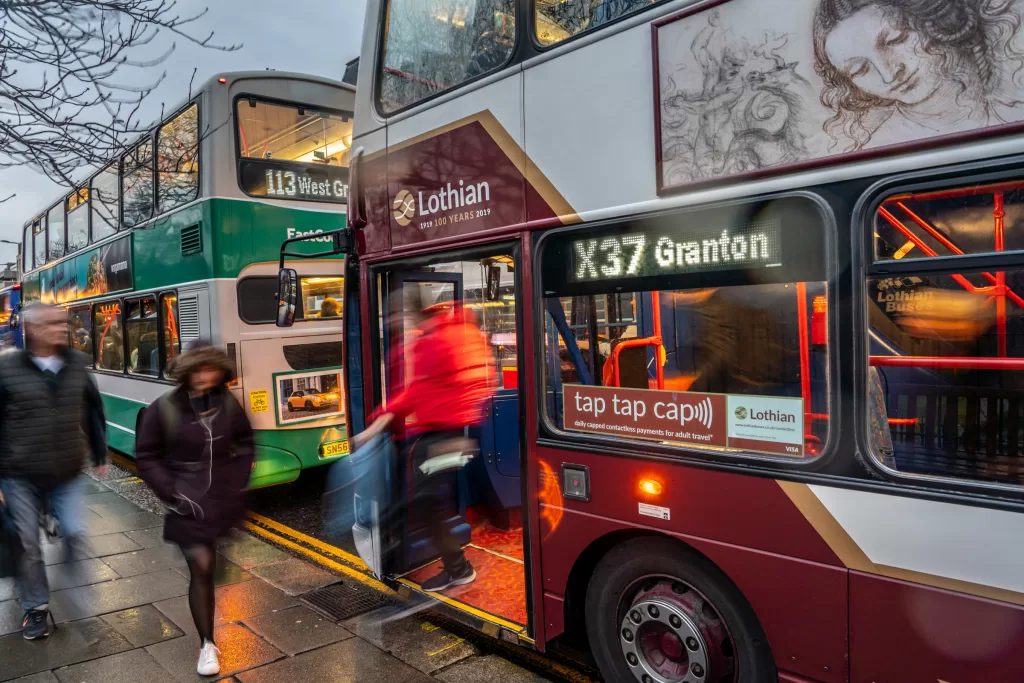
Happy riders, higher revenue
We’ve seen this in our own deployments. Take Edinburgh, where the introduction of account-based ticketing and open payments on Lothian Buses in 2019 triggered a change in passenger payment behaviour. In four years, cash was reduced from a 42% share of total payment volume to 13%. Contactless EMV adoption accelerated rapidly and now accounts for 50% of payment volume.
In our experience, systems that simplify fare collection and cater for all passengers’ preferred payment methods tend to see increased ridership and revenue as a result. But the latest evolution of ticketing technology can go further, creating headroom for efficiency and productivity gains.
5 STEPS TO BOOST THE EFFICIENCY OF FARE COLLECTION
1. Reduce dependence on costly cash handling
When passengers use their bank card, mobile wallet or m-ticket as their token for travel, the cost associated with cash handling plummets. Collection, reconciliation, secure storage, and transportation of cash carries a hefty price tag. Even if cash can’t be eliminated from a transport network, the expense can be reduced by offering and promoting the use of digital payment methods, which have relatively low overheads.
2. Introduce account based ticketing
Social inclusiveness is a common goal for cities and regions as they modernise their transport networks. Account-based ticketing (ABT) systems help operators and agencies succeed in their mission to ‘leave no one behind’.
ABT empowers all passengers, whether they have a bank account or not, to use a digital or card-based travel token to access transport with a simple tap on a validator. These include bank cards, mobile wallets, m-tickets, transit smartcards, and private label EMV cards.
When a passenger uses the system, a user profile, which can be registered or anonymous, is created and stored in the back-office. Travel logic, including any configured fare caps and concessionary rules are configured and managed there, and the ‘best value fare’ is automatically calculated.
The net effect of this simple experience, particularly when combined with open payments and fare capping, has been shown to incentivise ridership and drive revenue. When ABT enables an operator or agency to phase out closed loop transit cards, there’s an opportunity to cut the considerable cost of smart card issuance and maintaining smart card infrastructure.
3. Drive adoption of fraud-resistant open payments
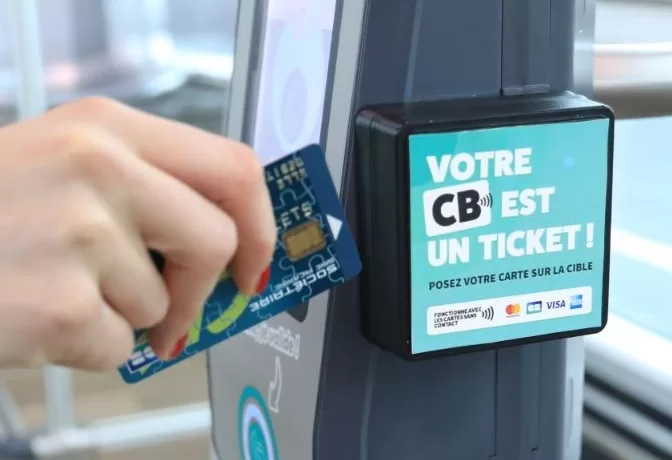
‘Reimagining Ridership’, a survey from the VISA Economic Empowerment Institute, recently found that 80 percent of transit agencies adopting open-loop schemes saw increased ridership, driving up revenue, with the potential to lower the transactional percentage cost of fare collection.
Creating an open-loop environment that capitalises on the investment of the financial system in contactless EMV card issuance makes economic sense. Closed-loop cards, paper tickets – and ticket desks, vending machines and kiosks needed for distribution and top-ups – can be a money drain.
By contrast, open-loop systems have a leaner physical infrastructure. They also make use of the banks to issue cards, promote adoption, and shoulder ‘first ride risk’. This is the rule by which issuing banks cover the cost of a trip when a payment method is not validated, after which it is put on a ‘deny list’ and the rider can’t travel until the debt is cleared.
Open-loop payments benefit from ultra-secure processing. Contactless EMV cards use smart microprocessor chip technology, which safeguards the cardholder’s credentials. Payment tokenisation limits the risk associated with compromised, unauthorised or fraudulent use of primary account numbers (PANs). This decreased vulnerability to fraud, and robust debt recovery processes, means that open-loop fare collection results in remarkably low loss rates.
In terms of productivity, open payments win again. For passengers, there’s no queuing for tickets or topping up smartcards. They simply turn up, tap on, and get onboard. Speeded-up transaction and boarding times make schedule adherence easier, with buses and trains getting from A to B faster.
Finally, open payments create a pool of passenger behaviour and payments data that can be used by operators to analyse passenger flows, peak travel times, and popular routes. This insight can help them to optimise services, deploy staff efficiently, and allocate resources effectively.
4 Future-proof fare collection investment
Some of the buzzwords of modern ticketing systems are:
- Modular
- Flexible
- Cloud-based
Flowbird’s CloudFare® back office and management system is a great example of these attributes. Using open standards and interoperable technologies, it is device agnostic, making upgrades simpler and cost-effective. It offers modules for fares and topology and account-based ticketing, and is integrated with our open payment platform, benefiting from multiple acquirer and card scheme connections.
CloudFare® is the core of a scalable, future-proof system where fare collection is managed in the cloud, rather than at a device level. Its user-friendly portal enables operators and agencies to devise rules for fares and topology and roll them out to their estate of ticketing devices.
Simple, real-time management reduces the cost of field support and fares configuration.
CloudFare® offers many other modules including one for asset management. This enables remote monitoring of ticketing hardware and quick identification and resolution of issues, without the need for on-site inspections. Maximum uptimes are great news for productivity.
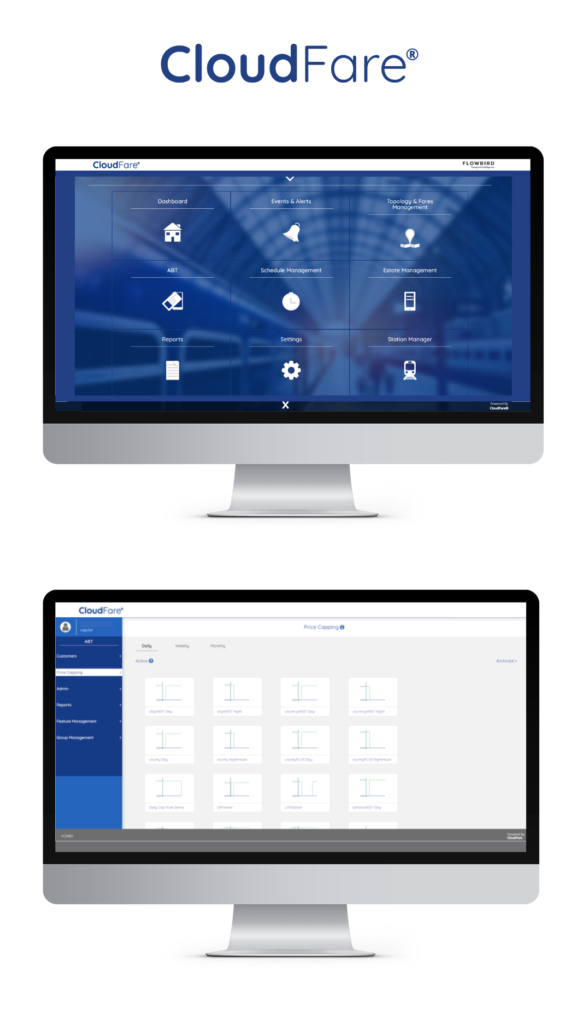
5. Explore the potential of MaaS
As Mobility-as-a-Service (MaaS) gains momentum, cities are beginning to explore how multi-operator, multi-modal fare systems can drive ridership and revenue. The industry is responding with digital platforms that create potential for appealing commercial offers and cost-savings through shared infrastructure.
Flowbird’s white-label MaaS app, used in Monaco as ‘Monapass‘, is one of the more advanced solutions. It enables planning, booking and payment for public transport, shared transport and mobility, and tourist services – all through one single-sign-on application. Once payment is made, m-tickets are stored in the app, to be validated to access services.
It’s possible to devise ‘bundle deals’ to incentivise behaviour change – for example, drivers who park out of town can receive a discounted bus fare, and bus travellers can get a reduced museum ticket.
Our MaaS app is built on a platform that’s designed to be shared. Multiple cities and regions can develop their own white-label apps using this foundation. This means the cost of fare collection, and of ongoing mobile development, can be spread across many partners. All parties benefit from increasing integrations and functionality as the platform grows.
Cutting fare collection costs and boosting efficiency
Delivering better passenger experiences, modern account-based and card-based fare collection systems help operators and agencies to cut costs and ramp up efficiency. Modular solutions are an ideal ally for cost-crunching. Open architecture allows fast, cost-effective deployment and upgrades, and promotes competitive pricing of all component parts.
Find out more about our modular transport solutions!

 International
International  Downtown West Chester Updates Its Parking System with Modern Payment Solutions
Downtown West Chester Updates Its Parking System with Modern Payment Solutions  Flowbird Garage Success Leads to On-Street Parking Expansion in Beverly Hills
Flowbird Garage Success Leads to On-Street Parking Expansion in Beverly Hills  The City of Leavenworth Updates Its Parking System with Effortless Parking Solutions
The City of Leavenworth Updates Its Parking System with Effortless Parking Solutions  Nouméa Modernizes Its Parking System with the Installation of New Flowbird Parking Meters
Nouméa Modernizes Its Parking System with the Installation of New Flowbird Parking Meters  SEPTA Partners with Flowbird to Launch Advanced Commuter Parking System
SEPTA Partners with Flowbird to Launch Advanced Commuter Parking System  Flowbird ticketing technology alights at Belfast Grand Central Station
Flowbird ticketing technology alights at Belfast Grand Central Station  Dallas Area Rapid Transit (DART) Partners with Flowbird to Modernize Transit System
Dallas Area Rapid Transit (DART) Partners with Flowbird to Modernize Transit System  Flowbird Group Secures 10-Year Contract to Revolutionize Warsaw’s Parking Infrastructure
Flowbird Group Secures 10-Year Contract to Revolutionize Warsaw’s Parking Infrastructure  Rochester Updates Its Parking System with 3 New User-Friendly Solutions
Rochester Updates Its Parking System with 3 New User-Friendly Solutions  Pittsburgh Regional Transit Partners with Flowbird for Fare Payment Solution
Pittsburgh Regional Transit Partners with Flowbird for Fare Payment Solution  Flowbird Successfully Delivers Advanced Parking Solutions to City of Poznań Road Department
Flowbird Successfully Delivers Advanced Parking Solutions to City of Poznań Road Department  Parking terminals reimagined – a smart way to reinvent on-street parking technology
Parking terminals reimagined – a smart way to reinvent on-street parking technology  Flowbird Systems Go Live in Madeira
Flowbird Systems Go Live in Madeira  The next poster cities for mobility
The next poster cities for mobility  What politicians and policy makers need to know about MaaS
What politicians and policy makers need to know about MaaS  MaaS start small and scale up
MaaS start small and scale up  Flowbird Pay-by-Plate Pay Stations Launch in the City of New York
Flowbird Pay-by-Plate Pay Stations Launch in the City of New York  Lyon chooses Flowbird for the implementation of its new progressive parking policy
Lyon chooses Flowbird for the implementation of its new progressive parking policy  Is MaaS an essential foundation for liveable cities?
Is MaaS an essential foundation for liveable cities?  Wyre Forest District Council car parks to have electric vehicle (EV) chargers installed
Wyre Forest District Council car parks to have electric vehicle (EV) chargers installed  Flowbird Supplies 500 Pay and Display Parking Meters in Bratislava!
Flowbird Supplies 500 Pay and Display Parking Meters in Bratislava!  MaaS: What cities need to do to make it work
MaaS: What cities need to do to make it work  Charleston, SC Updates Its Parking System with Effortless Digital Solutions
Charleston, SC Updates Its Parking System with Effortless Digital Solutions  Clearwater, Florida Launches Pay by Text Solution – No App or Account Required
Clearwater, Florida Launches Pay by Text Solution – No App or Account Required  Carlisle, PA To Update Its Parking System with User-Friendly Solution in 2024
Carlisle, PA To Update Its Parking System with User-Friendly Solution in 2024  Open Payments Launched In Toulouse – Contactless Card Validation!
Open Payments Launched In Toulouse – Contactless Card Validation!  Flowbird and Semitan join forces to make mobility effortless!
Flowbird and Semitan join forces to make mobility effortless!  Meet the Team: David Thompson
Meet the Team: David Thompson  Solving traffic flow – what politicians and policymakers need to know
Solving traffic flow – what politicians and policymakers need to know  The future of the roadside curb
The future of the roadside curb 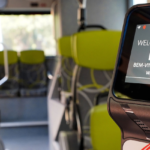 The future of the passenger experience and why effortlessness is the key
The future of the passenger experience and why effortlessness is the key  A guide to your city’s passengers: What you need to know
A guide to your city’s passengers: What you need to know  The 4 roadblocks in your city’s e-mobility plan
The 4 roadblocks in your city’s e-mobility plan  The road to zero-emissions cities (and, the parking when we get there)
The road to zero-emissions cities (and, the parking when we get there)  Why wait to decarbonise our regions?
Why wait to decarbonise our regions? 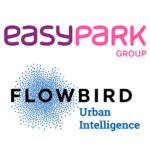 Flowbird Group takes a step forward in reshaping mobility through a strategic acquisition by EasyPark Group
Flowbird Group takes a step forward in reshaping mobility through a strategic acquisition by EasyPark Group  Park&Charge: Meet our expert
Park&Charge: Meet our expert  Flowbird gives cities a fast-track to e-mobility readiness
Flowbird gives cities a fast-track to e-mobility readiness 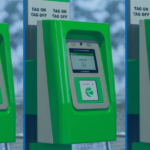 Coming soon to Perth: ‘tap to ride’ with your bank card or device
Coming soon to Perth: ‘tap to ride’ with your bank card or device  What’s next after open-loop transit payments?
What’s next after open-loop transit payments?  What would motivate you to use your car less?
What would motivate you to use your car less? 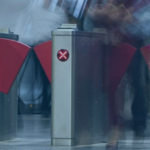 How to Boost the Efficiency of Fare Collection
How to Boost the Efficiency of Fare Collection  Lothian Buses new record: 100,000 taps in a day!
Lothian Buses new record: 100,000 taps in a day!  Smart Transport Ticketing: Benefits for Operators and Passengers
Smart Transport Ticketing: Benefits for Operators and Passengers 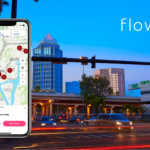 Flowbird App Empowers Tampa’s Parking Experience with Multi-App Integration
Flowbird App Empowers Tampa’s Parking Experience with Multi-App Integration  Meet the team: Justin Pounder
Meet the team: Justin Pounder  Flowbird, Umojo Partner for Off-Street Solution in Portand
Flowbird, Umojo Partner for Off-Street Solution in Portand  Cash versus digital payments in mobility systems
Cash versus digital payments in mobility systems  Flowbird teams up with Zuora to advance digitalisation and growth
Flowbird teams up with Zuora to advance digitalisation and growth  Flowbird app & Pay by Text now available in Sewickley!
Flowbird app & Pay by Text now available in Sewickley!  FabMob and Flowbird lead the way for accessible, sustainable mobility
FabMob and Flowbird lead the way for accessible, sustainable mobility  Passenger apps: Take 5 operator benefits
Passenger apps: Take 5 operator benefits  Contactless Interac Debit fare payments launch on Laval buses
Contactless Interac Debit fare payments launch on Laval buses  Edinburgh tramline extended to provide a route across the city
Edinburgh tramline extended to provide a route across the city  Take 5… Transport authority benefits of Account Based Ticketing
Take 5… Transport authority benefits of Account Based Ticketing  Parkex | Birmingham | 2023
Parkex | Birmingham | 2023  Flowbird Partners with the City of Minneapolis to Launch New & Improved MPLS Parking App
Flowbird Partners with the City of Minneapolis to Launch New & Improved MPLS Parking App 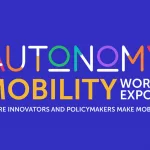 Flowbird presents its vision for connected urban mobility at AMWE in Paris
Flowbird presents its vision for connected urban mobility at AMWE in Paris  Clermont Ferrand makes the move to open payments on transport
Clermont Ferrand makes the move to open payments on transport  Flowbird’s transport talking points at Transport Ticketing Global
Flowbird’s transport talking points at Transport Ticketing Global 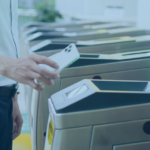 Take 5… Operator benefits of open payments in transport
Take 5… Operator benefits of open payments in transport  Flowbird envisions the transport ticket of tomorrow
Flowbird envisions the transport ticket of tomorrow  Ticketing & payments – a vital enabler of National Bus Strategy
Ticketing & payments – a vital enabler of National Bus Strategy  Flowbird announce new additions to the management team further to accelerate growth ambitions within the UK parking sector
Flowbird announce new additions to the management team further to accelerate growth ambitions within the UK parking sector  New London Brings Additional Convenience Parkers with Flowbird App
New London Brings Additional Convenience Parkers with Flowbird App  Podcast: Will transport payments drive a MaaS revolution?
Podcast: Will transport payments drive a MaaS revolution?  Take 5… Passenger benefits of open payments on transport
Take 5… Passenger benefits of open payments on transport  South Orange Parking Authority Updates Its Parking System with User-Friendly Solution
South Orange Parking Authority Updates Its Parking System with User-Friendly Solution  New ParkNYC App Proves to be Unrivaled Success in First 30 Days
New ParkNYC App Proves to be Unrivaled Success in First 30 Days 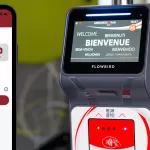 Monapass – One App, One Account, for Open Ticket Mobility
Monapass – One App, One Account, for Open Ticket Mobility  Translink Milestone for National Account Based Ticketing System for Northern Ireland
Translink Milestone for National Account Based Ticketing System for Northern Ireland  Flowbird Announces New CEO
Flowbird Announces New CEO  Flowbird unveils Off-Street Solution at IPMI 2022
Flowbird unveils Off-Street Solution at IPMI 2022  Flowbird is featured in the “Ticketing in Mobility as a Service” handbook published by UITP & STA
Flowbird is featured in the “Ticketing in Mobility as a Service” handbook published by UITP & STA  Flowbird Group acquires Your Parking Space
Flowbird Group acquires Your Parking Space  Transport Ticketing Global | London | 2022
Transport Ticketing Global | London | 2022  AIPARK Pdays | Florence | 2022
AIPARK Pdays | Florence | 2022  Ontario Transportation Expo | Toronto | 2022
Ontario Transportation Expo | Toronto | 2022  Flowbird Implements Automated Parking System To Palisades Interstate Parks
Flowbird Implements Automated Parking System To Palisades Interstate Parks  Smart City Forum | Warsaw | 2022
Smart City Forum | Warsaw | 2022  Birmingham Jefferson County Transit Authority Partners with Flowbird
Birmingham Jefferson County Transit Authority Partners with Flowbird  PARKEX | Birmingham | 2022
PARKEX | Birmingham | 2022  EVS35 | Oslo | 2022
EVS35 | Oslo | 2022  European Mobility Expo | Paris | 2022
European Mobility Expo | Paris | 2022  Konferencja SPP | Grudziądz | 2022
Konferencja SPP | Grudziądz | 2022  Svepark Conference | Gävle | 2022
Svepark Conference | Gävle | 2022  Milipol Qatar 2022
Milipol Qatar 2022  Mobility Hubs | London | 2022
Mobility Hubs | London | 2022  MILIPOL Qatar | Doha | 2022
MILIPOL Qatar | Doha | 2022 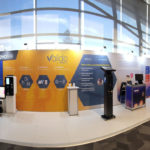 A look back at the PACE 2022
A look back at the PACE 2022  Thank you for visiting us at Intertraffic Amsterdam
Thank you for visiting us at Intertraffic Amsterdam 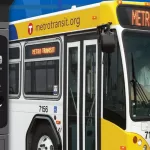 Flowbird Group to Expand Off-Board Fare Payments for Metro Transit
Flowbird Group to Expand Off-Board Fare Payments for Metro Transit 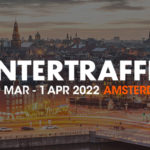 Intertraffic | Amsterdam | 2022
Intertraffic | Amsterdam | 2022  Flowbird completes first ever local authority Electric Vehicle charge point project for Wokingham Borough Council
Flowbird completes first ever local authority Electric Vehicle charge point project for Wokingham Borough Council  Podcast: the rise of open payments in transport
Podcast: the rise of open payments in transport 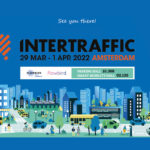 See you soon at Intertraffic Amsterdam 2022!
See you soon at Intertraffic Amsterdam 2022!  Flowbird is excited to share with you the latest news about Hong Kong!
Flowbird is excited to share with you the latest news about Hong Kong! 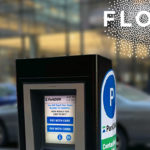 City of Des Moines upgrades to smart multi-space technology with Flowbird Group
City of Des Moines upgrades to smart multi-space technology with Flowbird Group 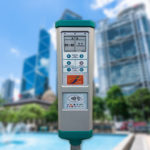 Flowbird trusted by HKT for their Smart City program
Flowbird trusted by HKT for their Smart City program  Flowbird announces a licensing agreement with Concar
Flowbird announces a licensing agreement with Concar  Mobility Awards City Rail & Transport
Mobility Awards City Rail & Transport  A great strategic win in Hamburg
A great strategic win in Hamburg 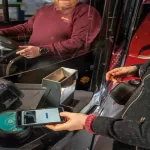 Lothian Adopts Weekly Capping with Support from Flowbird
Lothian Adopts Weekly Capping with Support from Flowbird 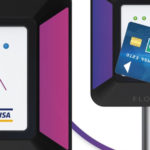 Tisséo, Flowbird and CIC deploy Open Payment in Toulouse
Tisséo, Flowbird and CIC deploy Open Payment in Toulouse 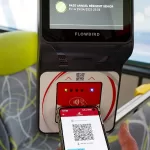 International Spotlight falls on MaaS in Monaco
International Spotlight falls on MaaS in Monaco 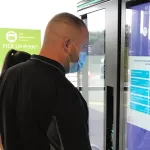 Northern Completes Major UK On-Station Rail Retailing Rollout
Northern Completes Major UK On-Station Rail Retailing Rollout  Flowbird Transforms Urban Mobility in Monaco
Flowbird Transforms Urban Mobility in Monaco 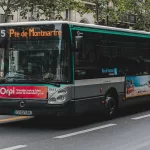 Conduent Transportation and Flowbird Selected to Equip Paris Ile-de-France Mobilités’ Buses and Trams with Next-Generation Onboard Ticketing Platform
Conduent Transportation and Flowbird Selected to Equip Paris Ile-de-France Mobilités’ Buses and Trams with Next-Generation Onboard Ticketing Platform  Flowbird’s Open Payments Expertise Wins Innovation Award
Flowbird’s Open Payments Expertise Wins Innovation Award  STL teams up with Flowbird and other new business partners to deliver a Québec First ― Next-generation credit card payment solution on all Laval buses
STL teams up with Flowbird and other new business partners to deliver a Québec First ― Next-generation credit card payment solution on all Laval buses 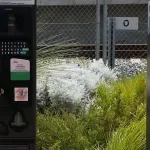 Flowbird Extends Ticketless Parking Across Transperth SmartRider Network
Flowbird Extends Ticketless Parking Across Transperth SmartRider Network 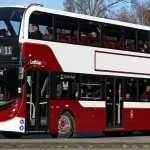 One million ‘taps’…and counting
One million ‘taps’…and counting 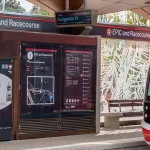 Canberra Launches Smart City Light Rail Network with Flowbird Technology
Canberra Launches Smart City Light Rail Network with Flowbird Technology  Flowbird Releases Mobile Ticketing App – ‘Loop Trolley’ App is Now Live in St. Louis, Missouri
Flowbird Releases Mobile Ticketing App – ‘Loop Trolley’ App is Now Live in St. Louis, Missouri 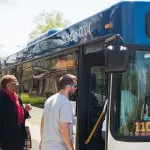 IndyGo Partners with Flowbird to Modernise Fare Collection System
IndyGo Partners with Flowbird to Modernise Fare Collection System  Transperth Extends Partnership with Flowbird Transport Intelligence
Transperth Extends Partnership with Flowbird Transport Intelligence 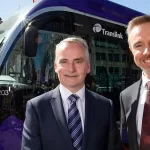 World-class ticketing system glides into Belfast
World-class ticketing system glides into Belfast  Edinburgh Trams Taps into Contactless Benefits
Edinburgh Trams Taps into Contactless Benefits 